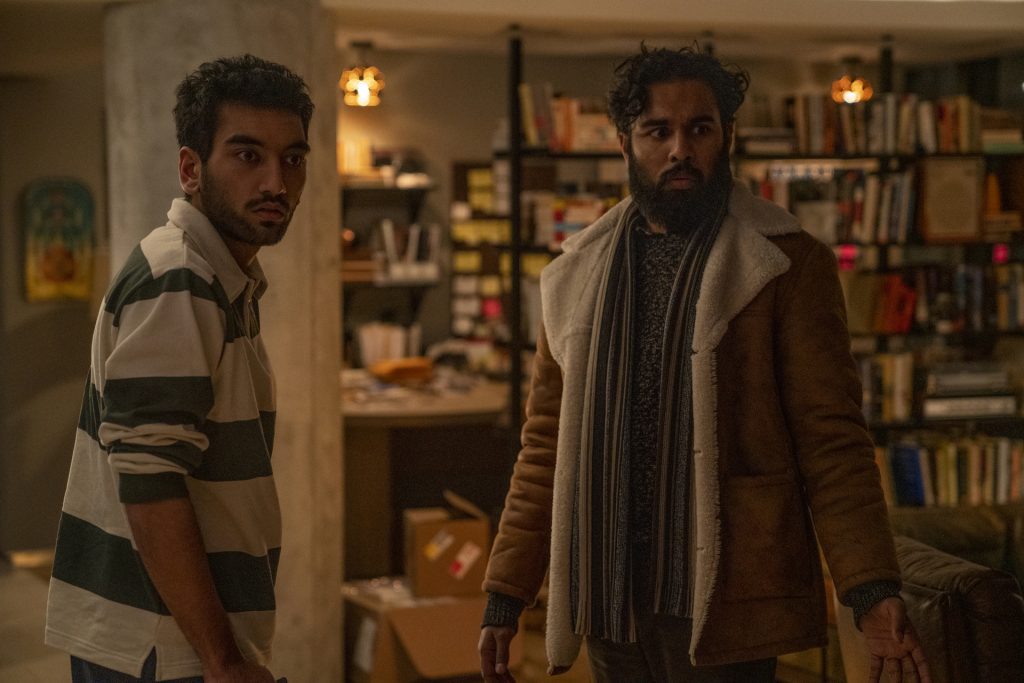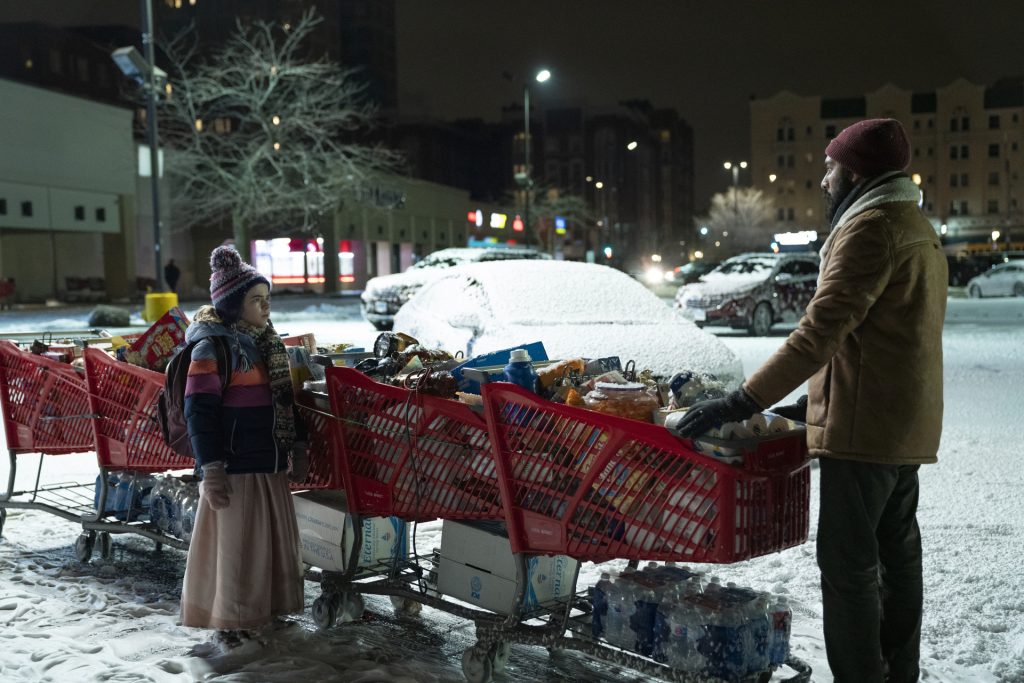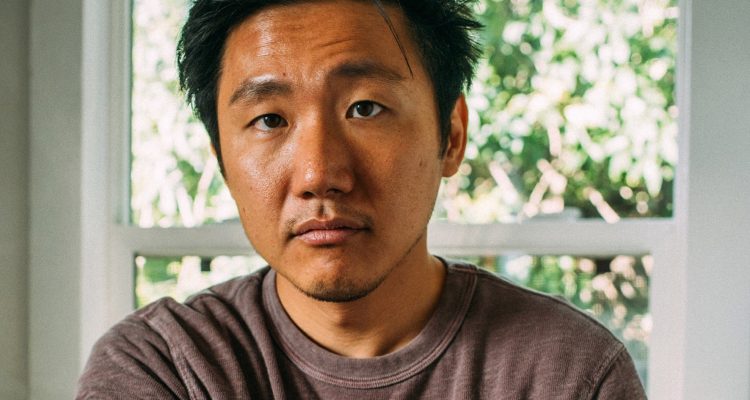From the post-apocalyptic HBO Max series Station Eleven, filmed in Chicago before the pandemic before shifting production to Toronto, to the critically acclaimed Donald Glover created FX series Atlanta, director Hiro Murai has had a busy few years.
After a four-year hiatus, Atlanta’s third and fourth seasons were filmed back-to-back in Europe and the US, coinciding with Murai’s involvement on Station Eleven. Now, the Grammy award-winning director has earned himself two Emmy nominations this year, one for Outstanding Directing for Comedy Series for the eighth episode of Atlanta’s third season, “New Jazz”, and Outstanding Directing in a Limited Series for Station Eleven’s pilot “Wheel of Fire”.
Murai, who was previously nominated in 2018 for directing the highly lauded second season episode “Teddy Perkins”, is reflecting on the craziness of his schedule over the last couple of years.
“Each episode [of Station Eleven] is very different and distinct,” shares Murai. “We tried to move the shoot dates for Station Eleven so I could shoot the two episodes before going to film Atlanta, and then the pandemic happened, and it pushed a whole year.”
With Station Eleven, Murai directed both the pilot and third episode, using his fluid visual sensibilities to establish the show’s post-apocalyptic world as one with hope and regeneration. The series is adapted from Emily St. John Mandel’s 2014 novel of the same name and follows a disparate group of individuals in the beginning and aftermath of a pandemic that wipes out most of the world’s population.
Working alongside showrunner Patrick Somerville to establish a contrast between modern-day Chicago and a pastoral new world, Murai sets the tone for the series in “Wheel of Fire,” seamlessly balancing multiple storylines. The series begins with aimless Jeevan (Himesh Patel) becoming the unwitting guardian of young actress Kirsten (Matilda Lawler) while the world around them begins to shut down in the early hours of the pandemic. The episode sets the two on a journey for the next twenty years, with Kirsten being played by MacKenzie Davis in the later years as they navigate the new world.
“There has been incredible art set in the post-apocalyptic world, but something about it felt aesthetically draining and nihilistic, and monochromatic,” explains Murai. “We built the whole [pilot] episode around these match cuts between a cold and oppressive modern-day Chicago and 20 years in the future that feels a little more sweet.”
Murai spoke with Awards Focus about collaborating with familiar people, bringing the source material of Station Eleven to life on the screen, contending with a busy schedule with three television series, and why he only directed two episodes of Station Eleven.

Awards Focus: You’re nominated for Outstanding Directing in a Comedy Series for Atlanta episode New Jazz and Directing in a Drama Series for Station Eleven. What has the award recognition meant to you?
Hiro Murai: It’s always surprising. Whenever I’m working, it’s with a specific group of people, so we get really myopic about what we’re working on. I often don’t think about how people will watch it when we’re making things, so it’s always surprising whenever people like it and we get any recognition.
AF: How do you think directing music videos early in your career has influenced your directing style today?
Murai: I came up in a time when music videos were very under-budgeted, but there were also many creatively exciting things happening in that scene. It coincided with the time when we were just starting to get cameras that were accessible but without having a lot of other resources.
So, I think there was a lot of experimentation in creating something impactful with very little. For me, it was about distilling ideas into the simplest, most evocative form and seeing if that strikes with people.
That minimalistic reduction approach seeps its way into television production as well. So we just try to keep it simple in some ways.
AF: Do you still work with the same specific group of people you did when you started directing music videos?
Murai: My editor on Atlanta is my college freshman roommate, and many of these people I’ve worked with for a long time. Atlanta‘s camera and lighting teams are the same as on Station Eleven. So you kind of build the language together.
Film production takes so many people, and I think it’s important that you have the same foundation that you’re building on every time you make something unless you’re intentionally trying to find something else with a new collaborator. So I think having the groundwork of a trusted collaboration with a couple of different departments is always helpful.

AF: What were the initial conversations you had with Station Eleven showrunner Patrick Somerville about the show’s overall aesthetic and bringing the source material to the screen?
Murai: The earliest conversation I had with Pat was him telling me about this show he was working on and me telling him that I didn’t like post-apocalyptic movies or Shakespeare. There has been incredible art set in the post-apocalyptic world, but something about it felt aesthetically draining and nihilistic and monochromatic.
Then he explained further that it’s about a select group of people you’re tracking because this incident wipes out a good chunk of humanity. It’s about these people persevering, surviving, and finding meaning in their lives. The more we talked about it, the more I realized that the whole thing hinged on the contrast of how oppressive the modern world feels right now versus what these people are experiencing after the collapse, which in some ways was more pastoral, ethereal, and beautiful in some capacity.
The contrast became central to everything. We built the whole episode around these match cuts between a cold and oppressive modern-day Chicago and 20 years in the future that feels a little more sweet.
We got obsessed with the idea of what that contrast evokes because you end up as an audience filling in the gap between what’s now and what’s there 20 years later. So the show’s structure evolved from that where we cut back and forth between different characters.
AF: When the pilot ends, Jeevan and Kirsten are leaving the apartment after 80 days into the new world and a blistering winter, yet it feels liberating and hopeful. What considerations went into that moment onto the journey of the next twenty years?
Murai: Not to be glib about it, but I kept thinking there are people who live in current times that would find a reset button refreshing in some ways, and that scene exiting the tower into the snowcap Chicago was more like a do-over.
Pat and I realized that there was a lot of death and destruction underneath the snow. There are parked cars, and at one point, you see a city bus, and what I love is that everything gets covered by this snow, and you don’t really focus on what was there before.
You’re focused on what happens from that point on, so thematically and visually, that’s something that we kept trying to claw at and making sure that we were setting foot in this genre in a specific way.

AF: I’m also curious about your schedule because seasons three and four of Atlanta were filmed back to back; you’re an EP on several episodes of FX’s The Bear, and production for Station Eleven shifted to Toronto during the pandemic. How did you manage all these projects, and were they coinciding?
Murai: [laughs] I’m very tired.
It was pretty simultaneous. The way it happened was that we shot two episodes for Station Eleven pre-pandemic. While we were editing, we shut down for six months and picked it up later that year in Toronto. I wasn’t directing all of those episodes, so I wasn’t physically on set as much. Then Atlanta’s third and fourth seasonswere shot back to back the year after, so starting February 2021 until that December, I was in Europe running around like a lunatic. The Bear was also happening simultaneously, making it a bit of a juggling fest.
AF: Did you consider directing more episodes of Station Eleven, or did filming for Atlanta influence what you could manage?
Murai: I would’ve liked to direct more episodes because it’s such a massive project, and there are so many things to do inside of it.
You know, it’s not the type of show where you set the tone for the first two episodes, and then you just repeat that pattern. Each episode is very different and distinct. We tried to move the shoot dates for Station Eleven so I could shoot the two episodes before going to film Atlanta, and then the pandemic happened, and it pushed a whole year.
In some ways, I’m happy that it worked out that way for Station Eleven. Maybe I’m just justifying it after the fact, but I think that the show feels like a crazy tapestry. You should feel like it’s a bunch of different people who put their signature on it, you know? I think the content of the show kind of lends itself to being more collaborative and a little more fluid.



